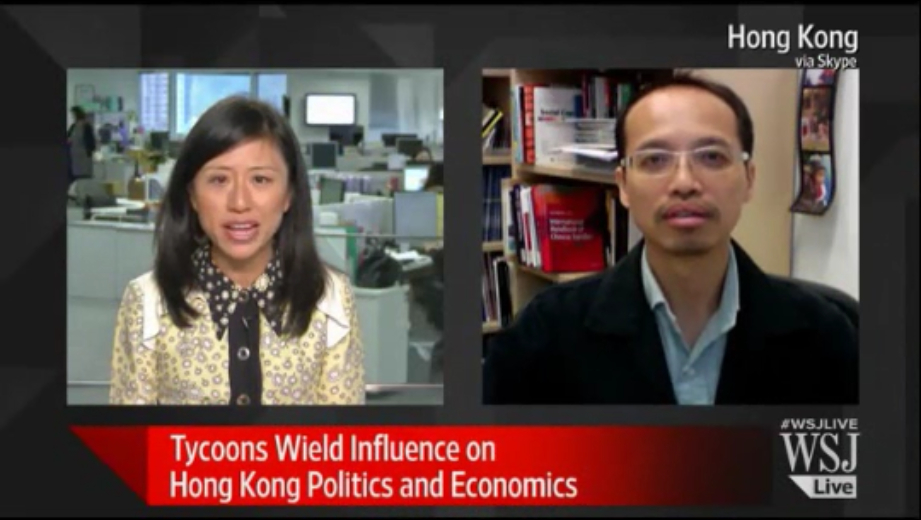Hong Kong Scions Change Tack

In an article and a video in The Wall Street Journal, Prof. Kevin Au points out that profit-maximisation and short-termism continue to dominate and represent the core value of Hong Kong, and this must change.
The recent pro-democracy protests highlight the need for Hong Kong’s tycoons to adapt to a changed business environment in which the city’s historic goals of economic development and efficiency are no longer unquestioned priorities. The change may come from the third generation of tycoon families, who are in their 20s and 30s and were educated abroad.
In the print and video interviews with The Wall Street Journal, Kevin Au, Associate Professor of Department of Management, Director of Centre for Family Business and Director of Centre for Entrepreneurship at The Chinese University of Hong Kong Business School comments that the tycoons may have done a lot of work in philanthropy, but they didn’t give up their principle of maximising profits. Although many of these tycoon families have been big donors and generously fund hospitals and schools in the city, this hasn’t solved the city’s problems or won them praise from the public.
The city isn’t full of startups but instead, is dominated by giant conglomerates controlled by these tycoon families. The lack of social mobility for Hong Kong’s next generation has given the tycoons a bad reputation. Prof. Au adds that the tycoons need to provide many different channels that allow the younger generation to climb up the social-economic ladder.
Prof. Au also points out in the video interview that the “Central value” continues to dominate and represent the core value of Hong Kong. Deeply rooted in Hong Kongers’ mind, not only among the tycoons but every citizen, the “Central value” is about maximising profits, getting rich quickly and to certain extent, making decisions based on “short-termism.” This “value” has affected different aspects of the Hong Kong society, and this must change in a way to accommodate other possible models for a better future… Read More (PDF)
The story’s Chinese translation is also published in The Wall Street Journal Chinese and is available in both simplified (PDF) and traditional (PDF) Chinese.
Please click the image below to view the video interview.
Source: Dow Jones Newswire/The Wall Street Journal
Date published: 30 October, 2014

